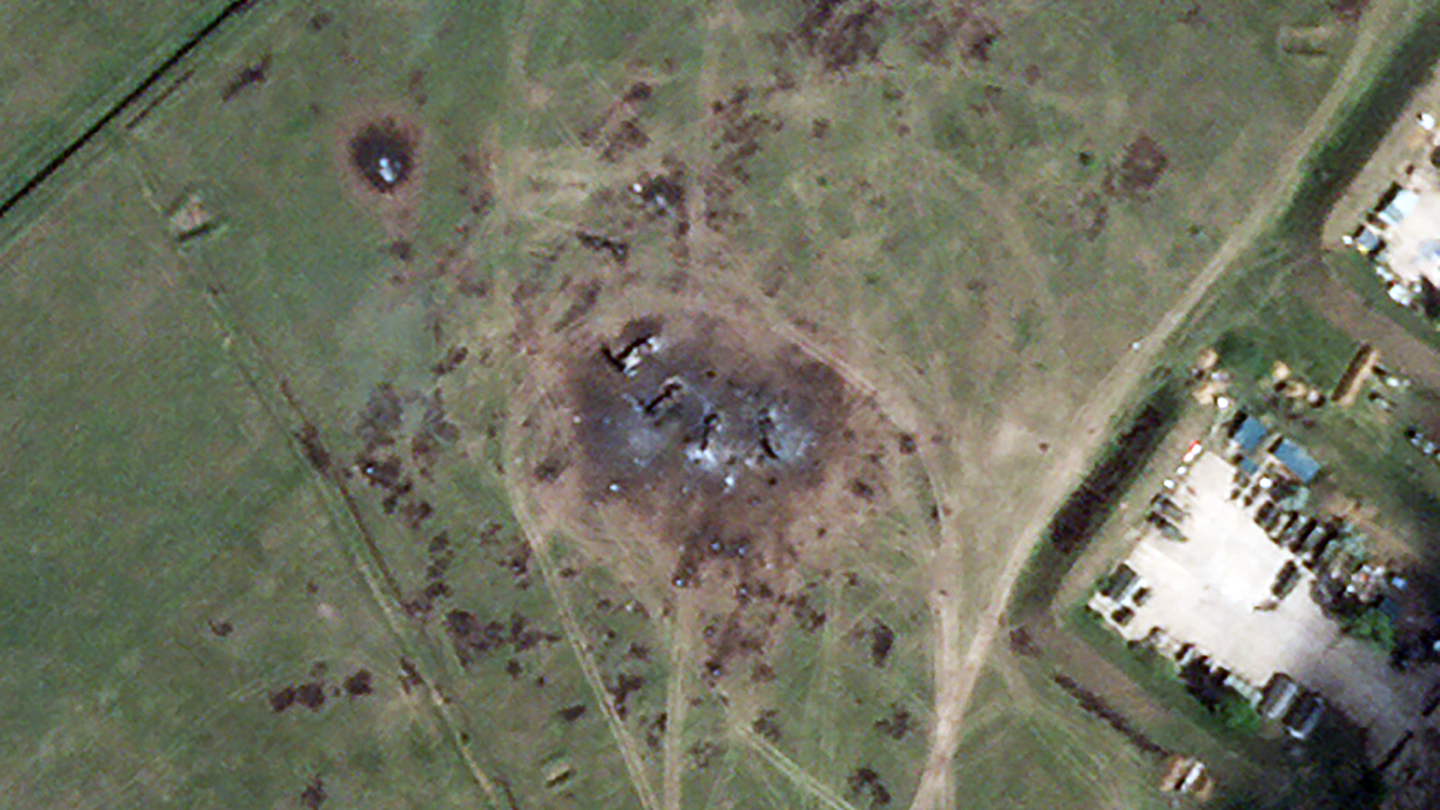Dzhankoi Air Base, which is home to multiple helicopters, tactical jets, and high-end ground-based air defense systems, came under a Ukrainian attack two evenings ago. You can read our previous reporting on the attack here. Ukrainian channels subsequently claimed that between three and five S-400 and S-300 air defense systems were hit, with various sources reporting a high price in life and other assets lost. Meanwhile, Russian sources said the attack on the base was prosecuted by the U.S.-supplied MGM-140 Army Tactical Missile System (ATACMS). We now have high-resolution satellite imagery that can confirm some of those claims.
The base, located in the northern part of Russian-occupied Crimea, around 90 miles from the front lines, is a major operating hub for air combat operations over Ukraine. Just as importantly, Dzhankoi’s S-400 and S-300 air defense systems can threaten Ukrainian air operations over a significant area.
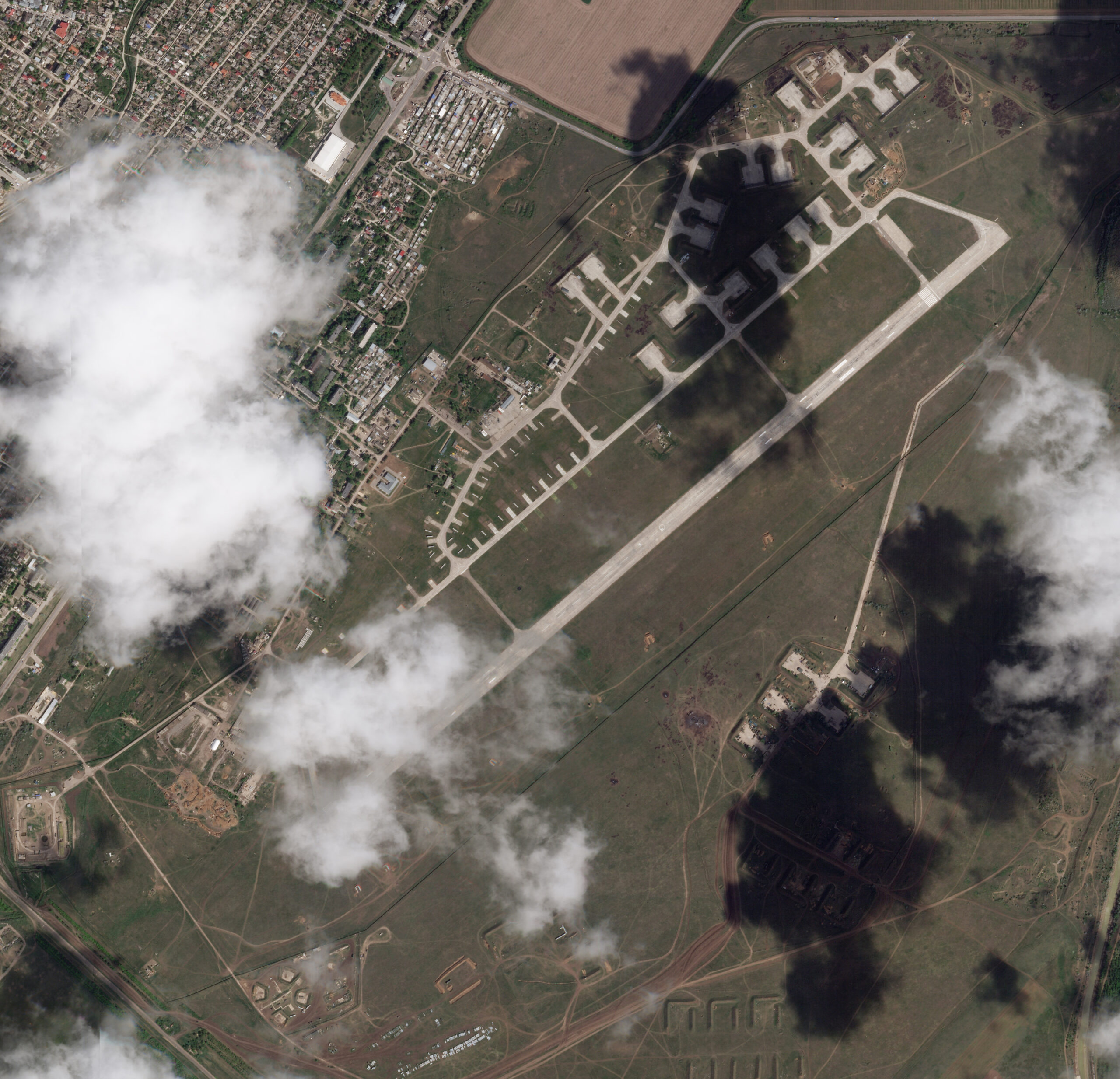
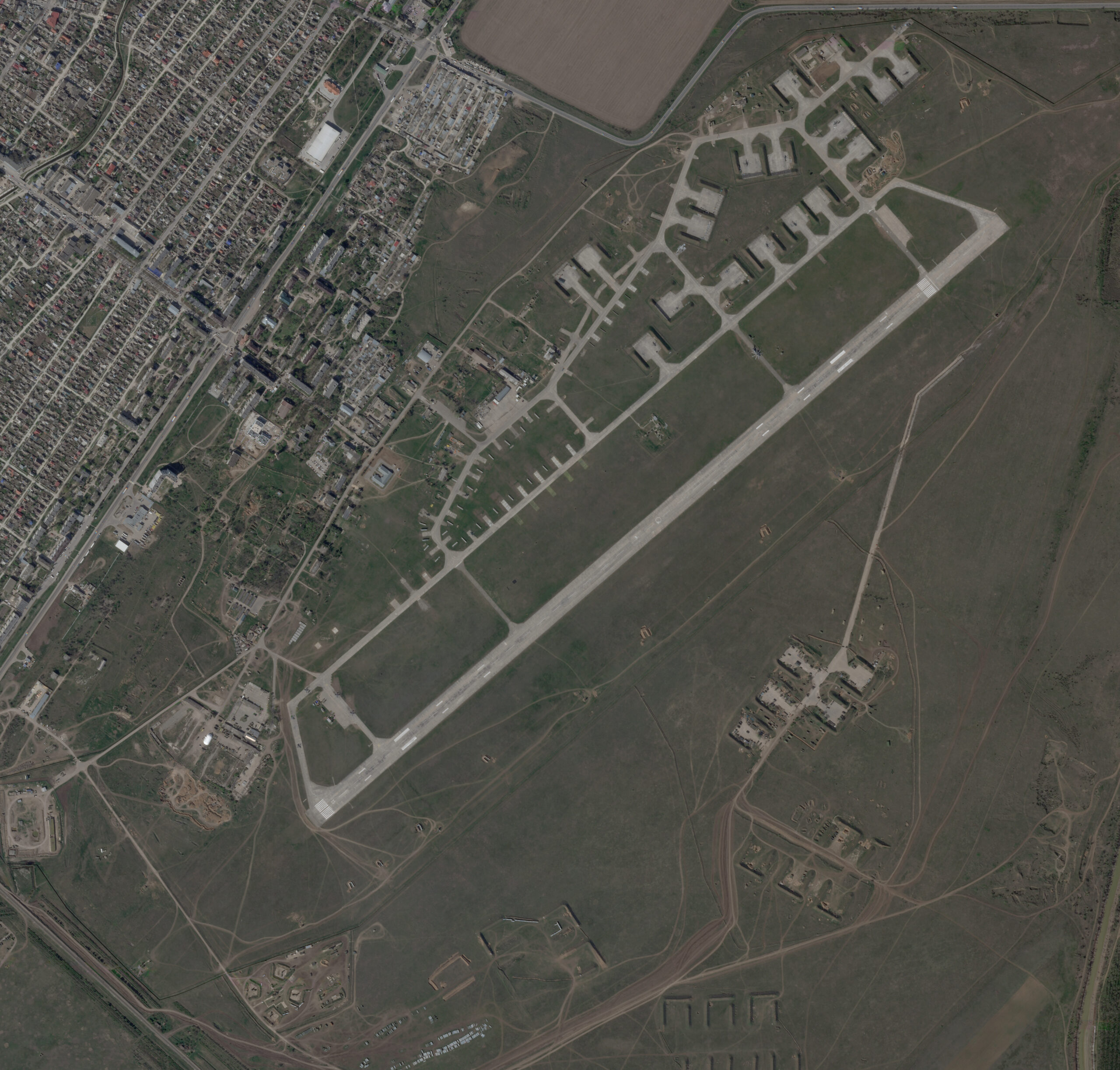
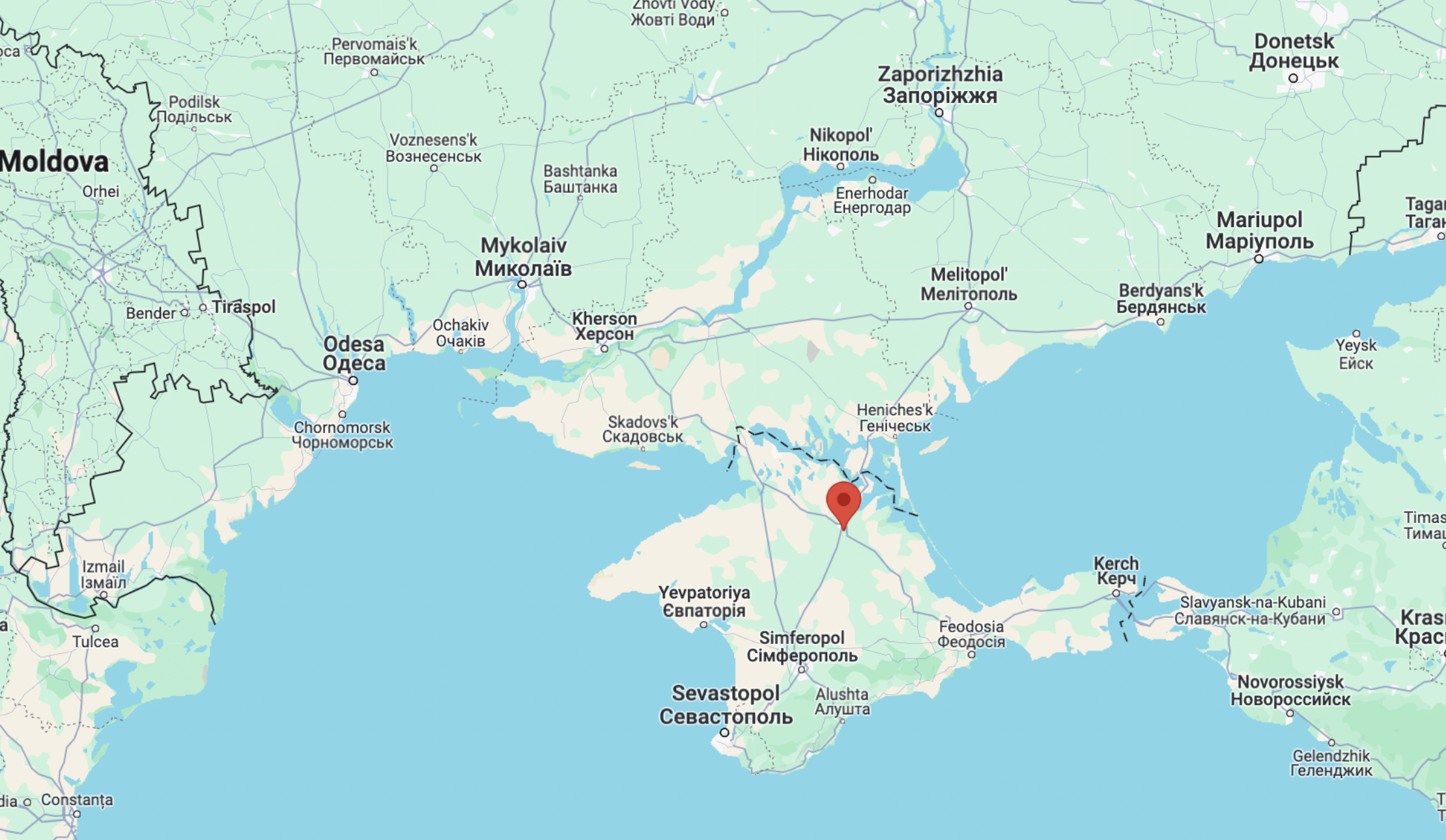
As TWZ has explained before, as regards the S-400, in particular:
“The long-range S-400 Triumf is Russia’s most advanced and capable of its widely fielded air defense systems. Each self-propelled or semi-trailer-mounted launcher has four missiles, which have ranges of up to 250 miles depending on the variant. That range is also highly conditions-based, including the target, its flight profile, and many other factors. Normal engagement ranges are usually significantly less than that. Search and tracking radars, including those in the X- and L-bands, give the complete system the ability to spot and engage both short-range ballistic missiles and low-flying cruise missiles, as well as fixed and rotary-wing aircraft.”
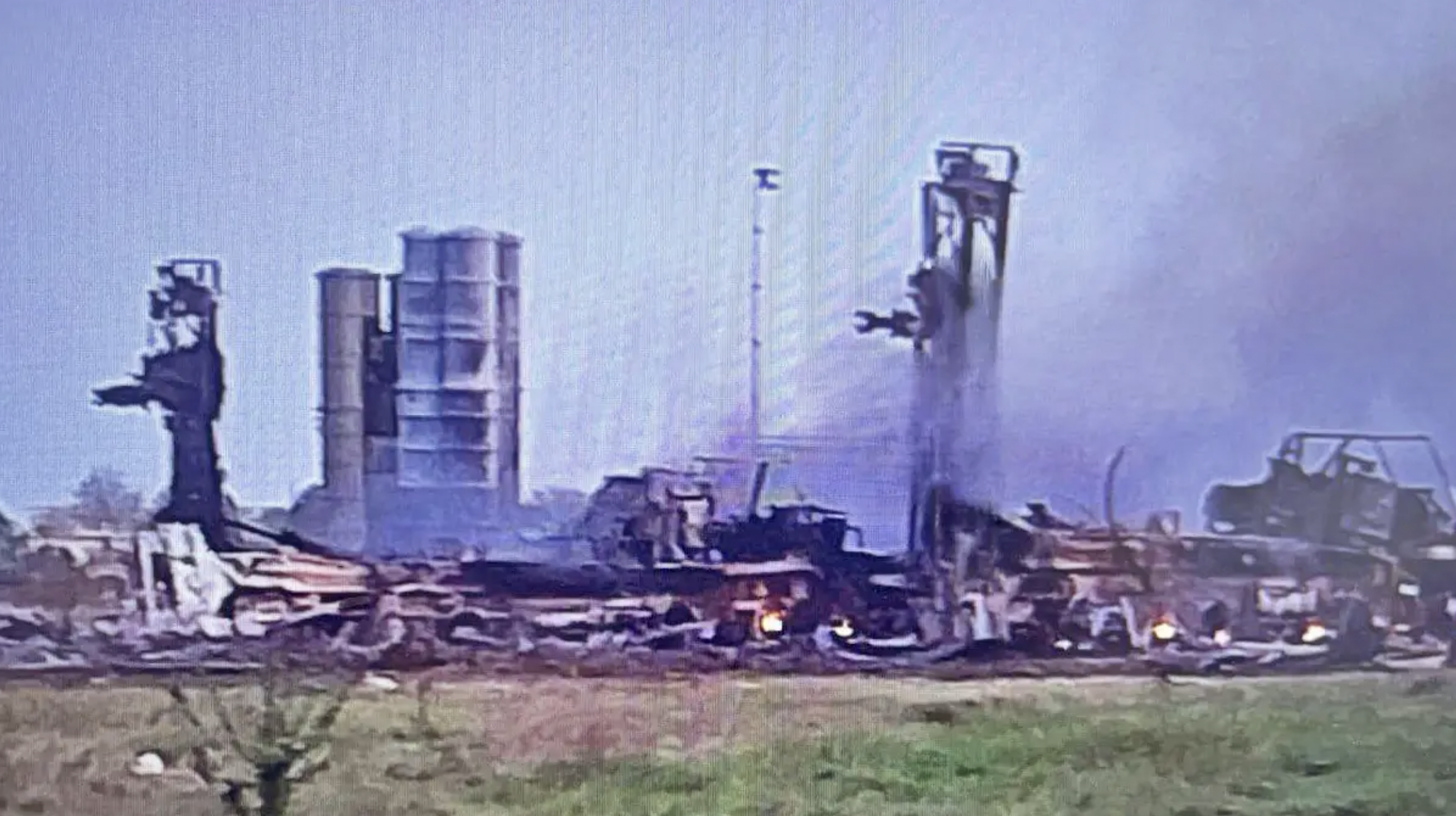
In imagery obtained from Planet Labs, which was taken today, we can see major damage to the S-400/S-300 site at Dzhankoi, which was located adjacent to a dispersal area on the south of the airfield. It appears that at least four major components of the system were hit and subsequently burnt out, and possibly more, based on the significant scorch marks. An account on the ZSU-War Telegram channel two days ago had claimed that a first wave of ATACMS missiles targeted the S-400/S-300 system, destroying three launchers and a radar unit. A photo that circulated in the aftermath of the attack also suggests that at least three transporter-erector-launchers (TELs) associated with the S-400/S-300 were at least damaged.

In satellite imagery from April 9, the air defense system was not here, indicating that it has been moved around, to reduce its vulnerability to attacks of this kind.
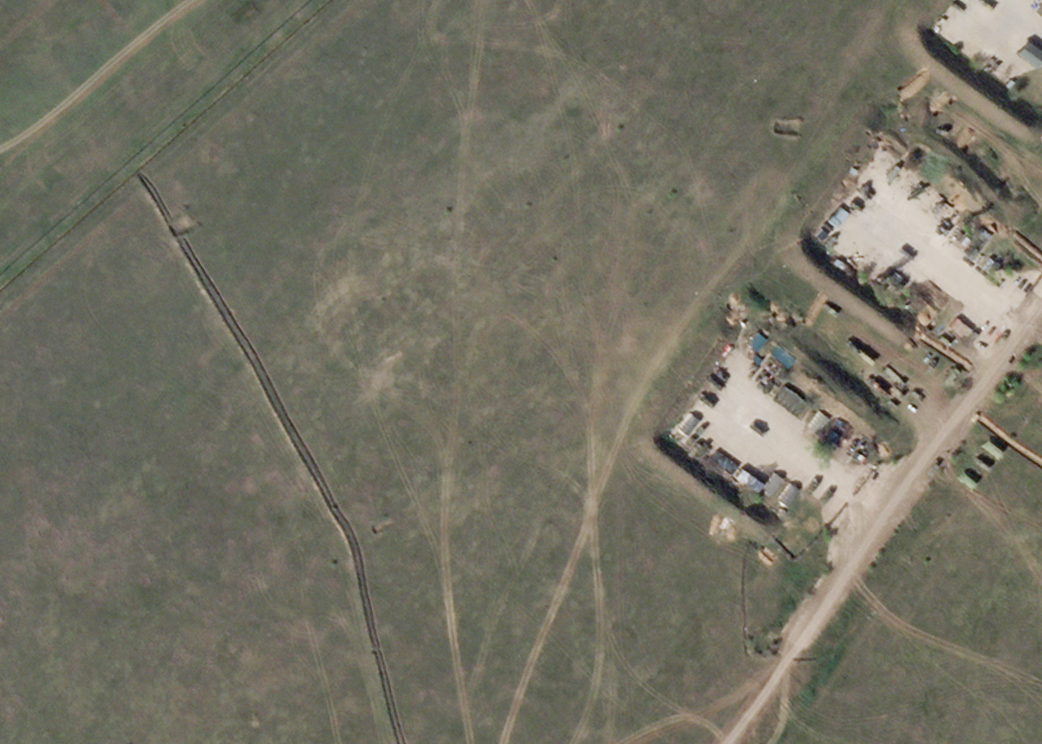
Soon after the initial reports of the attack, imagery from the Fire Information for Resource Management System (FIRMS), which provides near real-time active fire data via orbital infrared sensing, indicated at least six blazes around the airbase. That would also seem to be consistent with what we can see in the satellite imagery from today.
As well as the S-400/S-300 site, a pair of aircraft hardstandings on the north of the base were also targeted. In today’s satellite imagery, they can be seen ringed with scorch marks, although there is no obvious damage to any parked aircraft. That said, such aircraft could have been relocated since the attack. One helicopter can be seen parked on the easternmost of these hardstandings, having moved there sometime after April 9. Once again, there is no immediate evidence that this helicopter was damaged, although it can’t be ruled out, especially if it was struck by shrapnel.
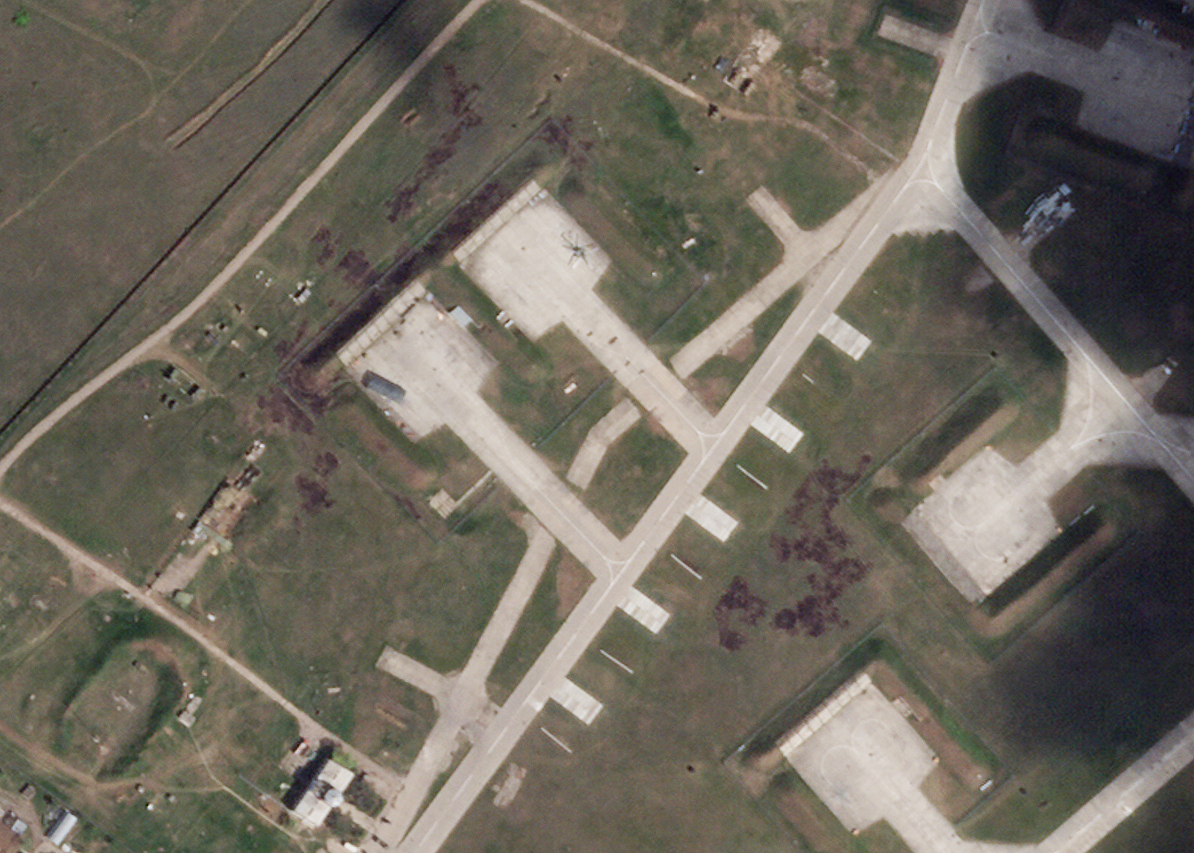
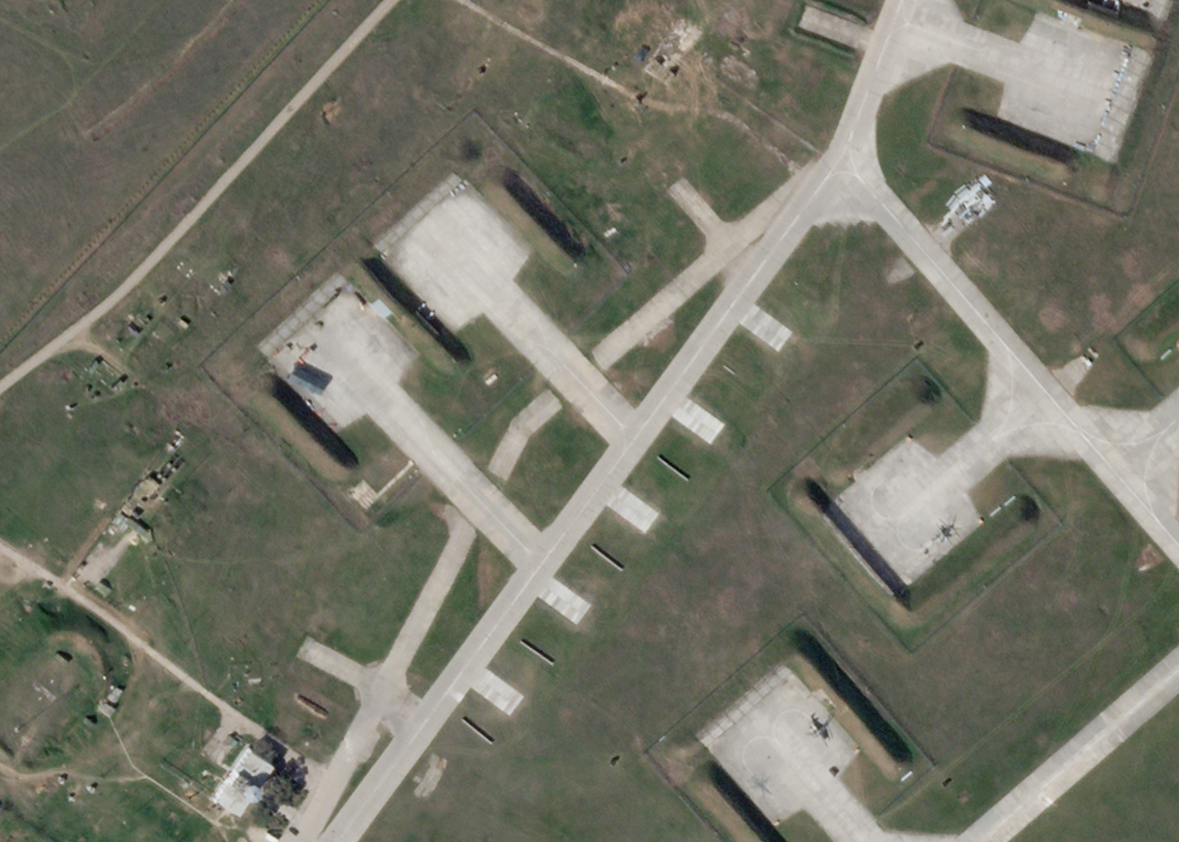
Moving to the far eastern side of the base there is a cluster of six more hardstands, which are again ringed with scorch marks in imagery from today. No helicopters are visible here now, although as of April 9, there were three parked in this area. Once again, it’s possible that damaged aircraft were moved in the aftermath of the attack. There are also some vehicles around these aprons, closer to the airbase perimeter, that could well be short-range air defense systems, such as the Pantsir series. Based on the extensive scorch marks, it’s likely that these vehicles — whatever they may be — sustained damage in the attack.
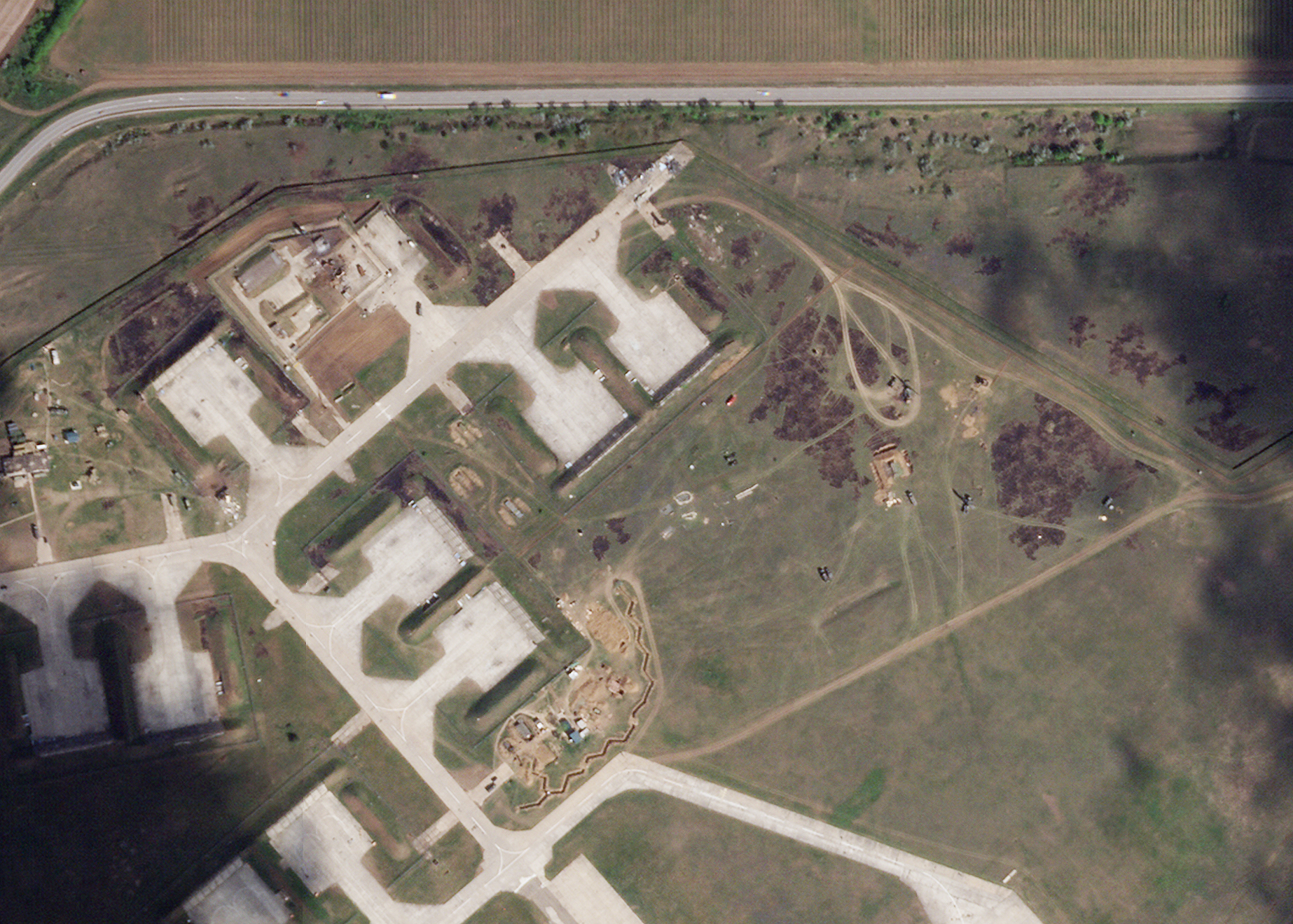
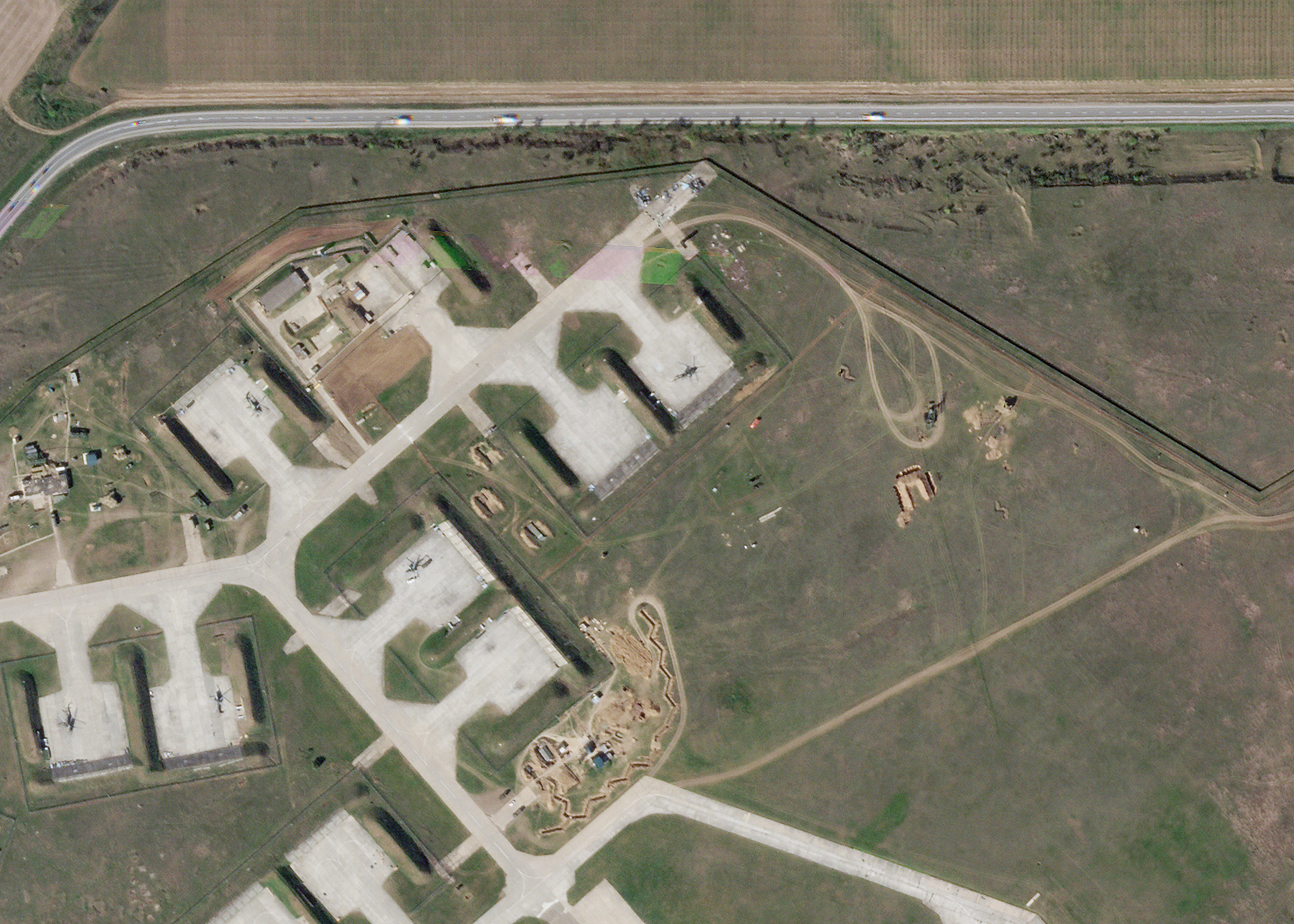
Since the imagery from today is partially obscured by clouds there could be more damage, although, based on what we can see here, some of the weapons storage areas were likely spared.
Claims from the Russian side in the immediate aftermath of the attack suggested that Ukraine used as many as a dozen ATACMS ballistic missiles against the airbase. A preliminary analysis of the imagery from today suggests that’s certainly possible and that would also appear to be backed up by a new photo showing wreckage of one of the missiles, purportedly from the attack.
In particular, the scorch marks around the base appear to be consistent with the effects of ATACMS fitted with cluster warheads, something that you can read more about here.
The first two variants of the ATACMS missile were both cluster munition dispensing models loaded with 950 and 275-300 submunitions and with maximum ranges of 165 kilometers (102 miles) and 300 kilometers (186 miles), respectively. The two missiles are known variously as the MGM-140A and B, the Block I and IA, and the M39 and M39A1.

As we noted in the past, Ukraine’s access to these missiles “puts vehicle pools, ammo dumps, and especially air defense systems and parked aircraft, under great threat.” We have seen the effects of these weapons on airbases before, namely during the combat debut of ATACMS in Ukrainian hands.
An airbase and logistics hub of this kind would be an ideal target for ATACMS, especially bearing in mind that Russian military infrastructure in and around Dzhankoi has been attacked on several occasions before as part of the broader campaign focusing on various Russian facilities in Crimea.
The use of ATACMS, if that was the case, would also seem to indicate that more examples of the missile have been handed over to Ukraine. According to local media reports, the United States provided between 12 and 20 of the missiles in October, but most if not all of these were apparently expended in attacks on Russian-held airfields the same month. In March this year, there were reports that additional (cluster-warhead versions) of ATACMS were headed to Ukraine.
Meanwhile, with increasing reports of Russian airpower operating more freely close to Ukrainian-controlled territory, an operation intended to knock out a critical air defense system, which threatens Ukraine’s own air activities over a wide area, would be especially timely.
As of last month, Dzhankoi Air Base was reportedly home to around a dozen attack helicopters, both Ka-52 Hokum and Mi-28 Havoc types, plus four Su-25 Frogfoot ground-attack jets. Satellite imagery from today suggests that aircraft numbers at the base have been reduced, supporting previous unconfirmed reports that Russia relocated helicopters to the airbase at Kirovski in the east of Crimea after the attack. Despite this, the airbase remains a very important logistics hub to support the wider Russian war effort.
Contact the author: thomas@thewarzone.com
